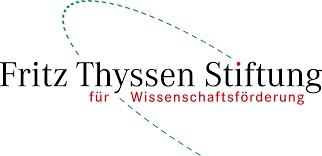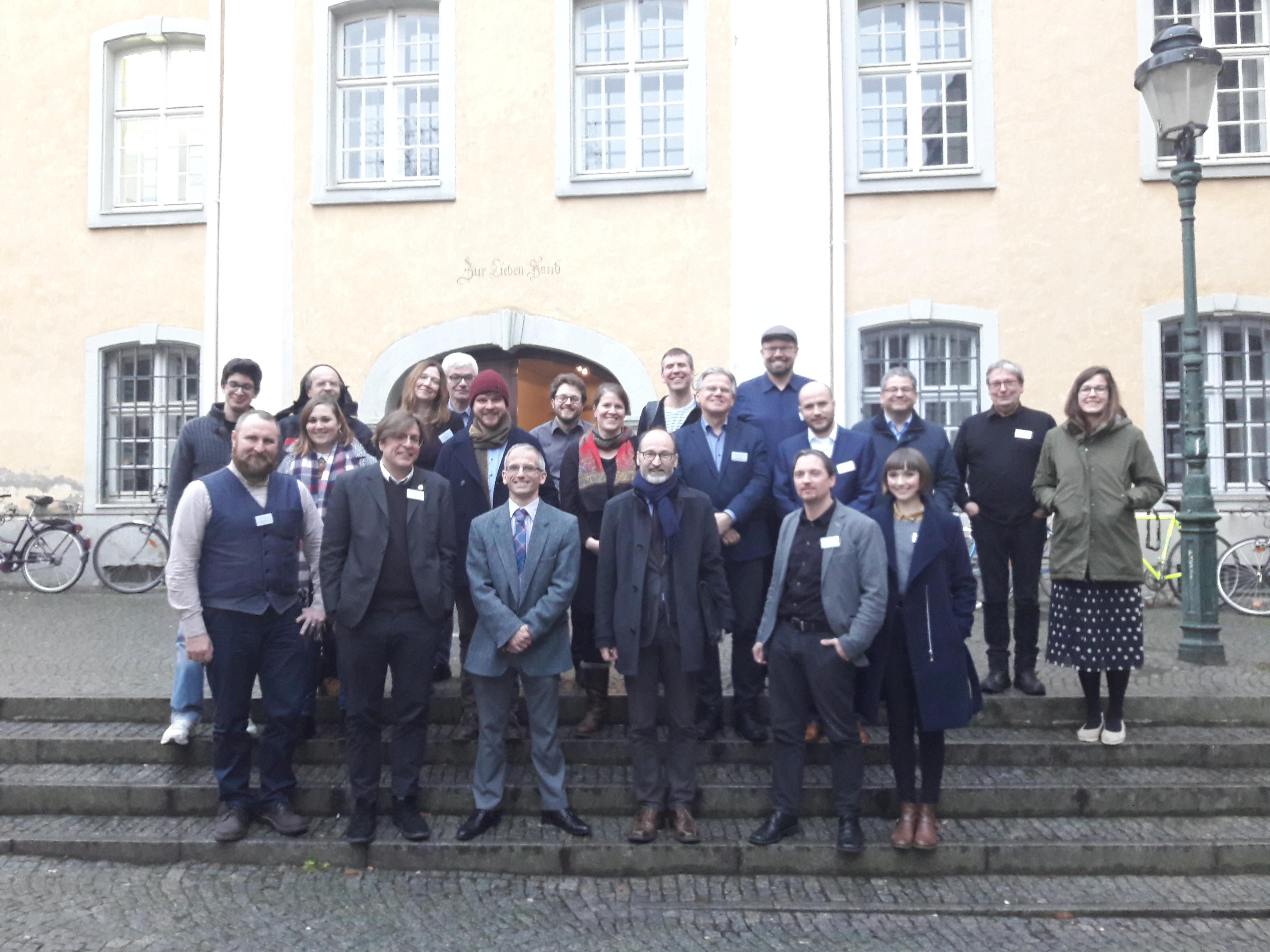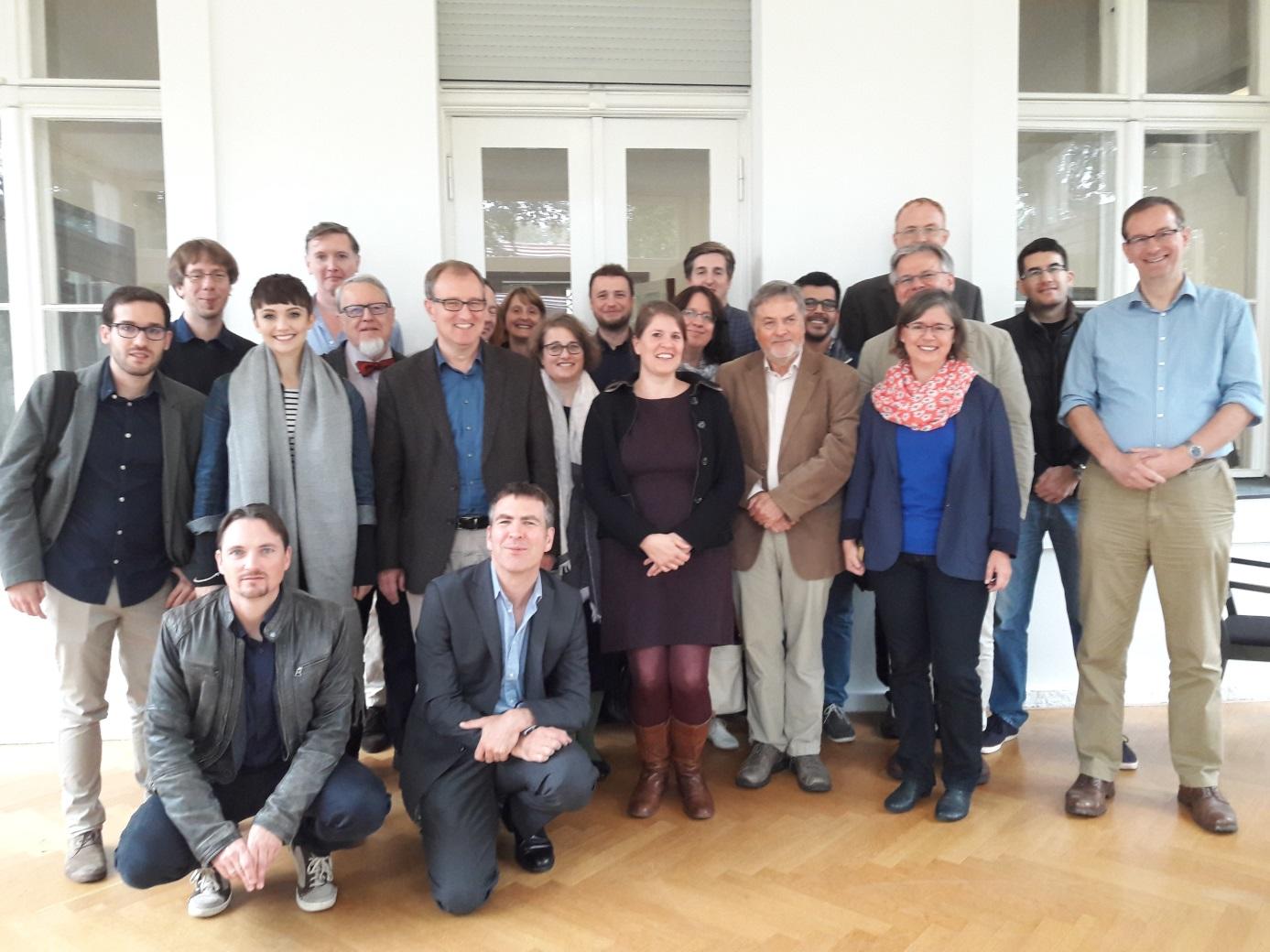The Militarisation of early medieval Societies. Nature, Control and Perception in a west-European Comparison
Project funded by the Fritz Thyssen Foundation (01/2016-06/2020).

Deutsche Fassung hier.

Christ depicted as warrior. 9th century, Stuttgart Psalter, fol. 23.
Forthcoming publication
Early Medieval Militarisation, eds. Ellora Bennett, Guido Berndt, Stefan Esders, Laury Sarti, Manchester, MUP, expected for early 2020, with papers by Ellora Bennett, Guido M. Berndt, Luc Bourgeois, Susanne Brather-Walter, Evangelos Chrysos, Simon Coupland, Svante Fischer, Stefano Gasparri, Hans-Werner Goetz, Kai Grundmann, Benjamin Hamm, Uta Heil, Edward James, Ryan Lavelle, Pablo Poveda Arias, Philip Rance, Michel Summer, Conor Whately and Thomas Wittkamp.
Project
Description
Since the end of Antiquity, the societies of Western Europe underwent a continual process of militarisation. This process intensified during the Early Middle Ages, and came to be a defining characteristic of the period. Militarisation can be identified by the lack of demarcation between the martial and civil spheres of the population; weapons became increasingly widespread and warlike attributes, activities, and values were widely recognised and respected. However, these examples represent only the ‘tip of the iceberg.’ Militarisation additionally impacted on how members of early medieval societies perceived their worldly position, and as such this research project employs both modern approaches to structural history and the history of mentalities. In brief, this research project investigates the phenomenon of militarisation and its overall impact on the development of early medieval societies.
This research project is focussed on the comparison of three case studies: Anglo-Saxon Britain, Lombard Italy and Frankish Gaul. These particular case studies have been selected because each region displays identifiable characteristics of militarisation, and for each there exists sufficient source material that provide insights into the process and reception of militarisation. Furthermore, these successor states provide the opportunity to question whether militarisation occurred as a consequence of existing late Antique trends, or resulted from the formation of new barbarian kingdoms in the post-Roman period.
Whilst Late Antiquity provides the starting point, the project focuses on the years between the sixth and late ninth century as it is during this time that militarisation’s impact on society is most evident. Furthermore, the sixth century saw the establishment of the post-Roman kingdoms under question whilst the invasions of Vikings and Saracens, and increased internal threats, were somewhat* characteristic of the ninth century. It is therefore possible to draw temporal as well as geographical comparisons between the case studies, promising a variety of new insights into this particular research field.
One possible comparison can be drawn when addressing modes of recruitment. In broad terms, the number of potential fighting men was limited in Lombard Italy as there seems to have been a degree of continued demarcation between civil and military organisations. On the other hand, recruitment in Frankish Gaul was not limited to the military ‘section’ of society as all free males could be called upon to conduct military service. Therefore recruitment in Frankish Gaul could take place on a very broad scale in comparison to Lombard Italy, and it is possible to suggest that such wide recruitment contributed to the gradual process of professionalisation of the Frankish army up to the ninth century. This notion of professionalisation leads to a comparison between the Frankish and Anglo-Saxon kingdoms. Whereas Frankish military professionalisation is characterised by a steady process, the ninth-century reforms of Alfred the Great provided a catalyst for the rapid specialisation of warfare in Anglo-Saxon England. These brief comparisons highlight differences between each case study. However a comparative approach can also be used to assess how warfare and violence impacted on each society in similar ways, suggesting overarching conclusions as to the perception and effects of militarisation.
During the first stages of the project, it is necessary to arrive at a clear definition of what is meant by ‘militarisation,’ and to clarify the implications of this term. Therefore, the interactions between society and the army will be analysed for each case study through consideration of the terminology of warfare and violence. Moreover, the archaeological record is essential in further elucidating the results from written evidence. Another goal of the project is to investigate which military structures had an impact on early medieval societies, which changes occurred when societies were confronted with war and violence. Finally, there will be an attempt to understand the consequences of militarisation on contemporary perceptions.
This research project is the first attempt to comprehensively analyse the phenomenon of militarisation during the formative period of the Early Middle Ages. By way of comparing Anglo-Saxon Britain, Lombard Italy and Frankish Gaul, it is possible to come to achieve a deeper understanding of the processes that led to the development of medieval societies overall.

Anglo-Saxon sword, 6th century, discovered on the Isle of Wight. British Museum, London.
Project members
Project leaders
Project staff
Co-operation partners
Dr. Philipp von Rummel (Deutsches Archäologisches Insttitut)
Dr. Ryan Lavelle (University of Winchester).
Former project members
Cosima von Hohenthal
Alexander Schie
Conferences, Workshops and Round Table Discussions
Early Medieval Militarisation. An Archaeological Perspective
International conference, Freiburg, 28th to 29th November 2018 (organised in cooperation with the German Archaeological Institute and the Institute for the Archaeology of the Middle Ages at the University Freiburg).
Location: Großer Saal, Haus zur lieben Hand, Löwenstraße 16, 79098 Freiburg im Breisgau.
You may download the flyer and poster here.
Please find a detailed report of the conference by Guido M. Berndt here.

28th November
9:00-09:30 Laury Sarti (Freiburg), Welcome and Introduction.
09:30-13:00 Session I: Weapon Burials (Moderation: Sebastian Brather)
Benjamin Hamm (Freiburg): Change of habit equals change of values? Burials of military men between 300 and 500 A.D.
Hubert Fehr (Tierhaupten), Mass militarization in the 6th and 7th centuries?
James Harland (Northumbria), Militarisation in unexpected places? Rethinking narratives about ethnicity and the post-Roman transition at the Early Anglo-Saxon Cremation Cemetery of Spong Hill, Norfolk
Susanne Brather-Walter (Freiburg): Militarisation in the female burial evidence.
14:30-16:00 Session II: Military Settlements (Moderation: Philipp von Rummel, Berlin)
Dawn Hadley (York), Warriors in Context: the Viking 'Great Army' and its followers.
Stephen Harrison (Glasgow) Viking Camps in Ireland – New Evidence and New Interpretations
16:30-18:00 Session III: Weapons and Warriors (Moderation: Stefan Esders, Berlin)
Ellora Bennett (Berlin), Symbolising militarisation. Some considerations on the importance of weapons in early Anglo-Saxon burials
Guido Berndt (Berlin): Weapons as signifiers of militarisation in Lombard Italy. Some historiographical and archaeological perspectives.
29th November
9:00-10:30 Session IV: Military Fortifications (Moderation: Ryan Lavelle, Winchester)
Luc Bourgeois (Caen): Recent research on fortifications in France 850-1000: new themes and new questions.
Alexandru Madgearu (Bucharest), The Byzantine Danubian borderland in the 10th-12th centuries
11:00-13:00 Session V: Comparing Early medieval Militarisation (Moderation: Laury Sarti)
Svante Fischer (Uppsala), Early medieval militarisation in Scandinavia and the outskirts of Rome. A comparative perspective.
Final discussion
***
Round Table Discussion on "The Militarisation of Early Medieval Societies" at the International Medieval Congress, University of Leeds, United Kingdom (3rd July 2018).
***
Conference: "Reflections of a Militarised World? Perceptions and conceptions of war and the military in the early Middle Ages (ca. 500-1000)"
International conference, Berlin, 19th to 21st September 2017.
You may find a report on the conference here.

Please click for the printed version of the poster and flyer.
19th September
13:30-13:45
Stefan Esders (Berlin), Introduction. The ‘Post-Roman Militarization Index’ and the Early Medieval Kingdoms.
13:45-15:15 Session I: Assessing Militarisation (Moderation: Miriam Czock, Duisburg-Essen)
Edward James (London), Militarisation. Twenty Years On.
Laury Sarti (Freiburg), Perceptions and Conceptions of War and the Military as Reflections of a Militarised World.
15:15-15:45 coffee break
15:45-17:15 Session II: War and Christian Thought (Moderation: Miriam Czock)
Uta Heil (Vienna), Swords in Christian Hands. Reflections on Gregory the Great.
Hans-Werner Goetz (Hamburg), Holy Wars? Religious Wars? The Perception of Religious Motives of Warfare against non-Christian Enemies in Ninth-Century Chronicles.
17:15-17:30 coffee break
17:30-18:15 Yannis Stouraitis (Vienna), Just war in Leo VI’s Tactica as a Hallmark of Imperial Romanness in early tenth-century Byzantium.
20th September
9:00-10:30 Session III: Assessments of the Warrior (Moderation: Ryan Lavelle, Winchester)
Ellora Bennett (Berlin), Construction of the Enemy in Pre-Viking England.
Thomas Wittkamp (Freiburg), Weapons and Warriors in the Gesta Karoli of Notker the Stammerer – Evidence of a Militarised World?
10:30-11:00 coffee break
11:00-12:30 Session IV: Perceptions of Military Combat (Moderation: Stefan Esders)
Stefanie Dick (Bonn), Krieg und Gewalt in der Darstellung des Paulus Diaconus
Guido M. Berndt (Berlin), Lombard Warfare. Some Observations from the Perspective of Non-Lombard Sources.
12:30-14:00 lunch
14:00-17:30 Thomas Scharff (Braunschweig), Defining battle in the Carolingian Age. Perceptions, Attributions and Appraisals.
Michel Summer (Freiburg), Images of war? A Reconsideration of the Figural Scenes on Early Medieval Helmets and other Items from north-western Europe
15:30-16:00 coffee break
16:00-17:30 Session V: Representations of Warfare (Moderation: Ryan Lavelle, Winchester)
Magali Coumert (Brest), Violence, Trickeries and Fights in Origin Accounts of the early Middle Ages.
Stefano Gasparri (Venice), “Gens Germana gente ferocior”. Lombards and Warfare between Representation and Reality.
21st September
8:30-10:00 Session VI: Why battles were fought (Moderation: Laury Sarti)
Pablo Poveda Arias (Salamanca), The Role of War in the Construction of Visigothic Kingdom in Hispania (507–589). Motivations, Perceptions and Factors of Military Cohesion.
Etienne Renard (Namur), Motives and Justification for Frankish Military Campaigns.
10:00-10:30 coffee break
10:30-12:00 Session VII: Assessments of Fighting (Moderation: Laury Sarti)
Simon Coupland (Cambridge), Warrior or Wimp? Charles the Bald as Military Commander.
Philip Rance (Berlin), “Displaying Many Wounds”. The Portrayal and Symbolism of Combat Injuries in early Medieval Warfare (4th-7th centuries).
12:00-12:15 coffee break
12:15-13:00 Ryan Lavelle (Winchester) and Philipp von Rummel (Berlin), Summary and Final Remarks.
Our project at the International Medieval Congress (Leeds) 2017!
***
Series: The Other Look at Early Medieval Societies – the Phenomenon of Militarisation
Although early medieval societies underwent a continual process of militarisation, this is a subject that only recently has come into the focus of modern research. These sessions collect papers dealing with different aspects of this phenomenon by using regional case studies as well as subject-related approaches.
Session I: Comparative approaches to early medieval militarisation
Moderation: Stuart Airlie (Glasgow)
1. Ralph Mathisen (Urbana-Champaign), “Not ‘the Other’: Barbarians and the End of the Western Roman Empire”
2. Edward James (London), “On the Militarisation of post-Roman Aquitaine”
3. Kai Grundmann (Berlin), “Gothic Italy – A (De)Militarized Society? The Dark Side of Ethnic Identity”
Session II: Early medieval military organisation
Moderation: Roland Steinacher (Berlin)
1. Ellora Bennett (Berlin), “‘Weapon-bearers’ and Warriors in Early Anglo-Saxon England”
2. Christoph Haack (Tübingen), “Carolingian Levies. Military Service and Local Communities. Peasant milita or Aristocratic Cavalry Force?”
3. Ryan Lavelle (Winchester), “The Evidence for Alfredian Military Reforms in their Ninth-Century Context: What can we Know?"
Session III: Using early medieval weapons
Moderation: Christopher Heath (Manchester)
1. Guido M. Berndt (Berlin), “Martiality and Beyond”
2. Irene Barbiera (Padua), “The Social Meaning of Weapon Burials in Early Medieval Italy”
3. Attila P. Kiss (Szeged), “The Military Force and Weapons of the Gepids in Light of the Written and Archaeological Sources”
4. Daniel Föller (Frankfurt), “Fight for your right! Using Weapons as Legal Remedies in Carolingian Europe”
Workshop: "Military Organisation and Society in the post-Roman World"
When? 15th to 16th August 2016.
Where? Friedrich-Meinecke-Institute (Koserstrasse 20, 14195 Berlin), room A 185.
Monday, 15th August
13:30-15:30
Laury Sarti and Stefan Esders, Introduction.
Philip Rance, Soldier and Civilian in the Byzantine Empire c.600–c.900. A Militarised Society?
16:00-18:00
Roland Steinacher, Pannonia as the Empire's Drill-Ground.
Matthias Hardt, Avars and Slavs – A military Relation?
Tuesday 16th August
9:00-11:00
Kai Grundmann, ‘Clipeus and Gladius of the Roman People’? Administration and Operations of the Ostrogothic Army in Italy.
Guido M. Berndt, The Role of the Military in Lombard Italy. Some Preliminary Considerations.
11:15-12:15
Leif I. R. Petersen, The Imperial Foundations of Frankish and Visigothic Military Organization: Some Methodological Considerations.
14:00-16:00
Ellora Bennett, The Anglo-Saxon Military before Alfred. An Overview.
Ryan Lavelle, The Development of Military Reforms under Alfred the Great of Wessex (871–899). A Review of Current Scholarship.
16:20-18:00
Philipp von Rummel and Lukas Bothe: Summary and Conclusions
Final Discussion
The program is also availeble here and on HSozKult.
An English conference memo published by Ellora Bennett via HSozKult can be found here, a German summary by Guido Berndt published via the Portal Militärgeschichte can be read here.
Internal group-meetings
03/02/2016: Basic discussion on the project subject and organisational issues.
24/02/2016: Definition of 'militarisation' and discussion of Edward James 'The Militarization of Roman Society, 400-700' (1997).
06/04/2016: Discussion of several papers on the militarisation of late Roman Gaul.
16/06/2016: Introductory discussion of the Anglo-Saxon military.
30/09/2016: Discussion of the Lombard military organization with reference to Paul the Deacon.
10/11/2016: The vernacular terminology of the early medieval laws.
02/02/2017: Ideas and conceptions as a historical source.
09/05/2017: Early medieval Militarization: project discussion and conference organisation.
16/01/2018: Current state of work and discussion of open questions.
15/05/2018: Current research questions and organisation of a third conference.
Readings
Bibliography referring to the project (status winter 2016).
Publications (written in preparation and in the framework of the project)
Berndt, G. M., (2007), Konflikt und Anpassung: Studien zu Migration und Ethnogenese der Vandalen (Historische Studien 489), Husum.
Sarti, L., (2007), Charakteristik und gesellschaftliche Bedeutung von Waffenträgern im merowingischen Gallien des 6. Jahrhunderts, Master (Magister) Thesis Hamburg 2007 (Propylaeum.DOK. Publikationsplattform Altertumswissenschaften), Heidelberg.
Esders, S., (2008), „Les implications militaires du serment dans les royaumes barbares (Vè–VIIè siècles)“, in M. Auzepy and G. Saint-Guillain (eds.), Oralité et lien social au Moyen Âge (Occident, Byzance, Islam). Parole donnée, foi jurée, serment, Paris, 17–24.
Esders, S., (2008), Grenzen und Grenzüberschreitungen. Religion, Ethnizität und politische Integration am Rande des oströmischen Imperium (4.–7. Jh.), in F. Rexroth und W. Huschner (eds.), Gestiftete Zukunft im mittelalterlichen Europa. Festschrift for Michael Borgolte on his 60th Birthday, Berlin 2008, 3–28.
Esders, S., (2009), „Öffentliche Abgaben und Leistungen im Übergang von der Spätantike zum Frühmittelalter: Konzeptionen und Befunde“, in T. Kölzer and R. Schieffer (eds.), Von der Spätantike zum frühen Mittelalter. Kontinuitäten und Brüche, Konzeptionen und Befunde, 189–244.
Esders, S., (2009), „Rechtliche Grundlagen frühmittelalterlicher Staatlichkeit: der allgemeine Treueid“, in W. Pohl (eds.), Der frühmittelalterliche Staat –europäische Perspektiven (Forschungen zur Geschichte des Mittelalters 16), Vienna, 423–434.
Esders, S., (2009), Sacramentum fidelitatis. Untertaneneid und Militärorganisation im früheren Mittelalter, unveröffentlichte Habilitationsschrift, 2nd edn., University of Bochum.
Lavelle, R., (2010), Alfred's Wars: Sources and Interpretations of Anglo-Saxon Warfare in the Viking Age (Warfare in History), Woodbridge.
Berndt, G. M., (2011), „Beute, Schutzgeld und Subsidien. Formen der Aneignung materieller Güter in gotischen Kriegergruppen, in: Lohn der Gewalt. Beutepraktiken von der Antike bis zur Neuzeit“, in H. Carl and H.-J. Bömelburg (eds.), Lohn der Gewalt. Beutepraktiken von der Antike bis zur Neuzeit (Krieg in der Geschichte 72), Paderborn, 121–148.
Esders, S., (2011) «Eliten» und «Strafrecht» im frühen Mittelalter. Überlegungen zu den Bußen- und Wergeldkatalogen der Leges barbarorum, in F. Bougard, H.-W. Goetz und R. Le Jan (eds.), Théories et pratiques des élites au haut Moyen Âge (Collection Haut Moyen Âge 13), Turnhout, 261–282.
Berndt, G. M., (2012), „Der rex Francorum Childerich, die Umstrukturierung der Macht in Gallien und ein Grab in Tournai. Indizien für einen Wechsel der Religion“, in N. Krohn and S. Ristow (eds.), Wechsel der Religionen – Religion des Wechsels. Tagungsbeiträge der Arbeitsgemeinschaft Spätantike und Frühmittelalter 5. Religion im archäologischen Befund (Studien zu Spätantike und Frühmittelalter 4), Hamburg, 167–192.
Esders, S., (2012) Spätantike und frühmittelalterliche Dukate. Überlegungen zum Problem historischer Kontinuität und Diskontinuität, in H. Fehr and I. Heitmeier (eds.), Die Anfänge Bayerns. Von Raetien und Noricum zur frühmittelalterlichen Baiovaria, St. Ottilien 2012 (Bayerische Landesgeschichte und europäische Regionalgeschichte 1), 425–462.
Esders, S., (2012) Die Integration der Barbaren im Lichte der römischrechtlichen Abtretung (cessio) fiskalischer Forderungen. Ein Beitrag zur Entstehung des nachrömischen Privilegienzeitalters, in P. Porena and Y. Rivière (eds.), Expropriations et confiscations dans L'Empire tardif et les royaumes barbares. Une approche régionale (Collection de l'École francaise de Rome 470), Rome, 29–47.
Esders, S., (2012), ‘Faithful believers’. Oaths of Allegiance in Post–Roman Societies as Evidence for Eastern and Western ‘Visions of Community’, in W. Pohl, C. Gantner and R. E. Payne (eds.), Visions of community in the post-Roman World. The West, Byzantium and the Islamic world, 300–1100, Farnham, 357–374.
Lavelle, R., (2012), Campagnes et stratégies des armées anglo-saxonnes pendant l’époque viking, Médiévales, 63, 123–144.
Berndt, G. M., (2013), „Murder in the Palace. Some Consideration on Assassinations in Late Antiquity and the Early Middle Ages“, in C. Dietl and T. Knäpper (eds.), Regeln der Gewalt. Rules of Violence, Berlin – Boston, 31–47.
Berndt, G. M., (2013) „Aktionsradien gotischer Kriegergruppen”, in Frühmittelalterliche Studien 47, 7–52.
Berndt, G. M., (2013), Gewaltsame Konflikte und einträgliche Kooperationen. Die Krieger Theoderichs im Osten und Westen des spätrömischen Reichs, in C. Föller and F. Schulz (eds.), Osten und Westen 400–600 n. Chr. Kommunikation, Kooperation und Konflikt, Stuttgart.
Esders, S., (2013), Zur Entwicklung der politischen Raumgliederung im Übergang von der Antike zum Mittelalter: Das Beispiel des pagus, in O. Dally and F. Fless u. a. (eds.), Politische Räume in vormodernen Gesellschaften. Gestaltung – Wahrnehmung – Funktion, Berlin, 195–211.
Sarti, L., (2013), Perceiving War and the Military in Early Christian Gaul (ca. 400–700 A.D.), (Early Middle Ages, Bd. 22), Leiden – Boston.
Sarti, L., (2013), Die Identität des Kämpfenden nach dem Zusammenbruch des römischen Militärwesens in Gallien, Archiv für Kulturgeschichte, 95,2, 309–332.
Esders, S., (2014), Konstans II. (641–668), die Sarazenen und die Reiche des Westens. Ein Versuch über politisch–militärische und ökonomisch–finanzielle Verflechtungen im Zeitalter eines mediterranen Weltkrieges, in J. Jarnut and J. Strothmann (eds.), Die Merowingischen Monetarmünzen als Quelle zum Verständnis des 7. Jahrhunderts in Gallien (MittelalterStudien), Munich, 189–241.
Esders, S., (2014), Wergeld und soziale Netzwerke im Frankenreich, in: St. Patzold and K. Ubl (eds.), Verwandtschaft, Name und soziale Ordnung (300–1100), Berlin – New York 2014 (Reallexikon der Germanischen Altertumskunde, Ergänzungsband 90), 141–160.
Esders, S., (2014), Nordwestgallien um 500. Von der militarisierten spätrömischen Provinzgesellschaft zur erweiterten Militäradministration des merowingischen Königtums, M. Meier and St. Patzold (eds.), Chlodwigs Welt. Organisation von Herrschaft um 500, Stuttgart (Roma aeterna 3), 339–336.
Berndt, G. M., (2015), Strategies of Representation: Minting the Vandal Regnum, in S. Solway (ed.), Medieval Coins and Seals: Constructing Identity, Signifying Power, Turnhout, 83–108.
Berndt, G. M., (2016), Gewaltsame Konflikte und einträgliche Kooperationen. Die Krieger Theoderichs im Osten und Westen des spätrömischen Reichs, in: Osten und Westen 400–600 n. Chr. Kommunikation, Kooperation und Konflikt (Roma Aeterna. Beiträge zu Spätantike und Frühmittelalter 4), eds. Carola Föller and Fabian Schulz, Stuttgart, 193–213.
Berndt, G. M., [forthcoming 2016], Instrumente der Gewalt: Bewaffnung und Kampfesweise gotischer Kriegergruppen (with H.-U. Wiemer), in: Millennium. Jahrbuch zu Kultur und Geschichte des ersten Jahrtausends n. Chr. 13 (2016).
Esders, S., (2016), Gallic Politics in the Sixth Century, in: A. C. Murray (ed.), A Companion to Gregory of Tours, Leiden, 429–461.
Esders, S., (2016), Spätrömisches Militärrecht in der Lex Baiuvariorum, in: F. Botta and L. Loschiavo (eds.), Civitas, iura, arma. Organizzazioni militari, istituzioni giuridiche e strutture sociali alle origini dell'Europa (sec. III–VIII). Atti del Seminario internazionale Cagliari 5–6 ottobre 2012, Lecce 2015, S. 43–78. Slightly extended English version in: Late Roman Military Law in the Bavarian Code, in: clio@thémis10 (2016) (La forge du droit. Naissance des identités juridiques en Europe (IVe–XIIIe siècles).
Esders, S., (2016), Wergild and social practice in the early middle ages: A 9th-century Reichenau fragment and its context, in: Osamu Kano and Jean-Loup Lemaitre (eds.), Entre texte et histoire. Études d'histoire médiévale offertes au professeur Shoichi Sato, Paris 2015, 117-127.
Lavelle, R., (2016), "Controlling and Contesting Urban Spaces: Rulers and Urban Communities in Southern England and Northern France from the Later 9th to 11th Century", in N. Christie and H. Herold (eds.), Fortified Settlements in Early Medieval Europe. Defended Communities of the 8th-10th Centuries, Oxford, 158-174.
Sarti, L., (2016), Die spätantike Militärpräsenz und die Entstehung einer militarisierten 'Grenzgesellschaft' in der nordwesteuropäischen limes-Region, in C. Rass (ed.), Militärische Migration vom Altertum bis zur Gegenwart (Studien zur Historischen Migrationsforschung 30), Paderborn, 43–56.
Sarti, L., (2016), „Eine Militärelite im merowingischen Gallien? Versuch einer Eingrenzung, Zuordnung und Definition", Mitteilungen des Instituts für österreichische Geschichtsforschung 124.2 (2016), 271–295.
Berndt, G. M., (2017), “The Goths Drew their Swords Together”. Individual and Collective Acts of Violence by Gothic Warlords and their War Bands, in: Killing or Being Killed: Bodies in Battle Perspectives on Fighters in the Middle Ages (Mainzer Historische Kulturwissenschaften), ed. Jörg Rogge, Bielefeld, 15–40.
Berndt, G. M., (2017), "Zur Materialität der Gewalt: Waffen gotischer Krieger" (mit H.-U. Wiemer), in: Gewaltgemeinschaften. Entstehung, Kohäsionskraft und Zerfall, hg. von Winfried Speitkamp, Göttingen, 41-66.
Lavelle, R., (2017), "Perceiving and Personifying Status and Submission in Pre-Viking England. Some Observations on a few early Hostages", in M. Bennett and K. Weikert (eds.), Hostage-Taking and Hostage Situations: The Medieval Precursor to a Modern Phenomenon, London, 36-59.
Sarti, L., (2017), "The Military, the Clergy and Christian Faith in sixth-century Gaul", Early Medieval Europe 25.2, 162–185.
Esders, S., (2018), "Die Capitula de expeditione Corsicana Lothars I. vom Februar 825. Überlieferung, historischer Kontext, Textrekonstruktion und Rechtsinhalt", in: Quellen und Forschungen aus italienischen Archiven und Bibliotheken 98, 91-144.
Berndt, G. M., (2018), "Gewaltsame Ressourcenbeschaffung. Zu einigen raubwirtschaftlichen Praktiken gotischer Kriegergruppen", in Pillages, tributs, captifs: prédation et sociétés de l’Antiquité tardive au haut Moyen Âge – Plünderungen, Tributzahlungen, und Gefangennahmen: die Aneignung von fremdem Eigentum von der Spätantike zum frühen Mittelalter (Histoire ancienne et médiévale, Bd. 153), eds. Rodolphe Keller and Laury Sarti (Paris: Éditions de la Sorbonne), 69-88.
Berndt, G. M., (2018), "Raids, Invasions, and Migrations. Some Considerations about Gothic Warlords and their Warrior Groups", in: Le migrazione nell'alto medioevo. Atti delle settimane di studio LXVI Congresso Internazionale di studi sull'Alto Medioevo (Spoleto, 5-11 aprile 2018), Spoleto 2019, Bd. 1, 237-265.
Sarti, L., (2018), "Methoden, Bedeutung und Legitimation der Aneignung von fremdem Eigentum am Übergang von der Antike zum Mittelalter. Zusammenfassung und Diskussion", in R. Keller and L. Sarti (eds.), Pillages, tributs, captifs: prédation et sociétés de l’Antiquité tardive au haut Moyen Âge – Tributzahlungen, Plünderungen, und Gefangennahmen: die Aneignung von fremdem Eigentum von der Spätantike zum frühen Mittelalter, Histoire ancienne et médiévale, Bd. 153 (Paris: Éditions de la Sorbonne), 179-193.
Berndt, G. M., [forthcoming], Formen der Herrschaftsorganisation in poströmischen regna des 5. und 6. Jahrhunderts. Die Königreiche Geiserichs in Africa und Theoderichs in Italien, in: Die Interaktion von Herrschern und Elitengruppen in imperialen Ordnungen (Das Mittelalter. Beihefte), ed. Wolfram Drews, München.
Berndt, G. M., [forthcoming], Zur Materialität der Gewalt: Waffen gotischer Krieger (with H.-U. Wiemer), in: Gewaltgemeinschaften. Entstehung, Kohäsionskraft und Zerfall, ed. Winfried Speitkamp, Göttingen.
Berndt, G. M., [forthcoming], Theoderich vs. Theoderich – Zur Konkurrenz gotischer Warlords im Osten des Römischen Reiches, in: Cities, Territories and Identities (1st International Conference „Roman and Late Antique Thrace“), ed. Lyudmil Vagalinski.
Berndt, G. M., [forthcoming 2018], Insurgency and Counterinsurgency in Lombard Italy (ca AD 600-700), in: Conflict and Violence in Medieval Italy, 568-1154, eds. Christopher Heath and Robert Houghton, Amsterdam.
Sarti, L., (2018), „Der fränkische miles: weder Soldat noch Ritter“, in Frühmittelalterliche Studien 52.1, 99–117.
Berndt, G. M., [forthcoming 2019],, Die Darstellung von Kontingenz und ihrer Bewältigung in Quellen zum ostgoten- und langobardenzeitlichen Italien, in: Gallien zwischen imperium und regna. Die Darstellung von Kontingenz und ihrer Bewältigung (Macht und Herrschaft, Schriftenreihe des SFB 1167), eds Matthias Becher und Hendrik Hess.
Sarti, L., [forthcoming 2019] "The Military and its Role in Merovingian Society", B. Effors and I. Moreira (eds.), Oxford Handbook of the Merovingian World, Oxford (in print).
Sarti, L., [forthcoming 2019], „Militärische Wertvorstellungen und männliche Identität im merowingischen Gallien“, in Amalie Fößel (ed.), Gewalt, Krieg und Gender im Mittelalter (Bern: Peter Lang), in print.
Sarti, L., [forthcoming 2019], „Der merowingische Heilige als Krieger“, in Michael Grünbart (Hrsg.), Die Militarisierung der Heiligen (in print).
Bennett, E., G. M. Berndt, S. Esders & L. Sarti [forthcoming 2020], "Introducing Early Medieval Militarisation (ca. 400–900)", in Early Medieval Militarisation, Manchester: MUP (in preparation).
Sarti, L., [forthcoming 2020], "Military Identities in the post-Roman West“, in Philip Rance (ed.) Companion to Military Culture in Late Antiquity (Warfare in the Ancient Mediterranean World), Leiden/New York: Brill.
Further oral presentations (scientific gatherings not organised by the project members)
Sarti, L., „Miles und militunia. Ein (Begriffs)Paar zwischen Unfreiheit und Kriegsdienst?“, Beitrag im Rahmen der Tagung „Gewalt, Krieg und Gender im Mittelalter“, Hannover, organisiert durch den Lehrstuhl für Geschichte des Mittelalters der Universität Duisburg-Essen (13/07/2016).
Berndt, G. M. "Zur Militarisierung der Gesellschaft im langobardenzeitlichen Italien", FU Berlin, FK (14/07/2016).
Sarti, L., „Ein vorbildlicher Krieger! Der Heilige und sein Kampf gegen sich selbst“, Beitrag im Rahmen der Tagung zum Thema „Die Militarisierung der Heiligen“, organisiert von Prof. Dr. Michael Grünbart, Münster (01/02/2017).
Berndt, G. M. "Bewaffnung, Ausrüstung und Kampfesweise der Langobarden in Italien (568-774)", FU Berlin, FK (14/02/2017).
Berndt, G. M. "Die Waffen der Langobarden II", FU Berlin, FK (23/05/2017).
Sarti, L., „Der merowingische Heilige als Krieger“, Beitrag im Rahmen des Landesgeschichtlichen Kolloquiums des Lehrstuhls für Mittelalterliche Geschichte I der Albert-Ludwigs-Universität Freiburg (13/06/2017).
Berndt, G. M. "Die Langobarden in Italien. Eine militarisierte Gesellschaft?", LMU München (12.07.2017).
Berndt, G. M. "(Not) the 'anarchists of the Völkerwanderung' – New Approaches to the Military History of the Lombards", Uni Tübingen (19/07/2017).
Berndt, G. M. & S. Esders, "Der Aufstand des langobardischen dux Alahis und seine Erzählung durch Paulus Diaconus" FU Berlin, FK (14/11/2017).
Sarti, L., "Der fränkische miles: weder Soldat noch Ritter", Landesgeschichtlichen Kolloquiums des Lehrstuhls für Mittelalterliche Geschichte I, Universität Freiburg (05/06/2018).
Sarti, L., „Militarisierungstendenzen im frühmittelalterlichen Italien, Gallien und England und deren (Be)deutung“, Kolloquium, Braunschweig (16/01/2019).
Sarti, L., „Frühmittelalterliche Militarisierung. Militär und Gesellschaft im europäischen Vergleich (500–900)“, Vortrag im Rahmen der Ringvorlesung „Krieg und Frieden in historischer Perspektive“, Universität Freiburg (21/01/2019 ).
« zum Arbeitsbereich "Geschichte der Spätantike und des frühen Mittelalters".



